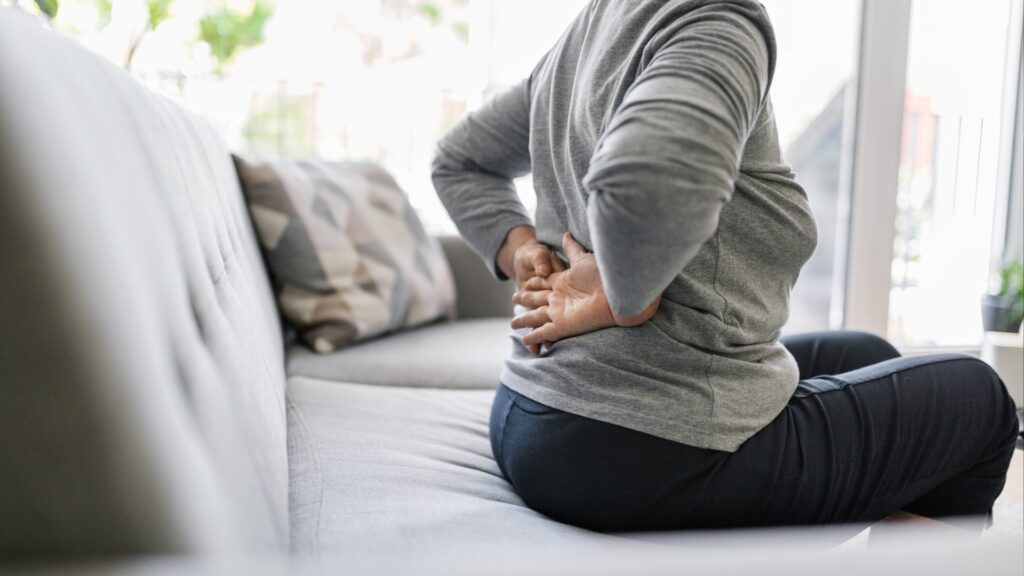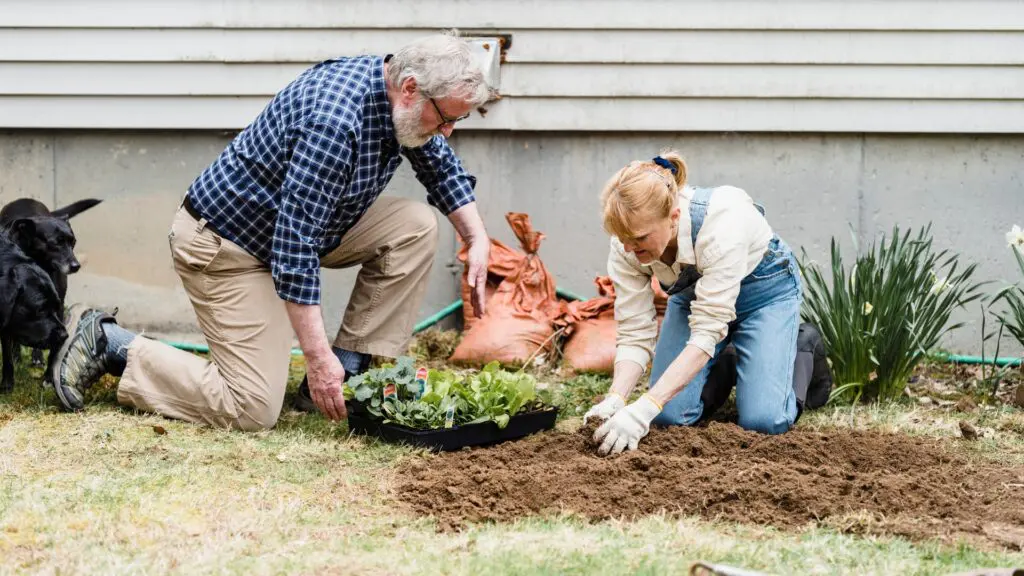
The Best Way To Prevent Back Pain As You Get Older
Lower back pain is an issue that will affect all of us at some point in our lives. The real question is whether it will be a minor bump in the road, or a turn for the worse. Unfortunately for many the onset of back pain can gradually lead to deterioration of health and wellbeing. This might sound a little extreme but over the years the stories we’ve heard from patients and members alike echo this sentiment in more instances than we would like. With this in mind we thought it helpful to cover one core concept that is so simple it is often overlooked. Not only will this help you reverse a downward spiral in back health and general wellbeing, but it will also work as a fantastic preventative measure for not just back injuries, but a whole host of conditions that affect us particularly as we get older.
Slowing down with age is an inevitability we all face
This is certainly non-negotiable, there are few who would argue that an 80 year old has the capacity to outperform a 25 year old olympian. However, the statement itself is very important to unpack as it is used as a tool to justify decreasing health measures, giving you the excuse to do nothing as it would just be pointless. This is false.
As you’re going through life, your body will have a capacity, if you were to be able to devote all your time to your physical conditioning and health, with no limit on resources, what could you do? Chances are, pretty much the same as those people on the television, or pretty close to it! You’d be almost unrecognizable. Perhaps turning the clock back to when you were in your 20’s, this “superhuman” version of you would be the epitome of human health. But even this version of you would steadily slow down with age, to some degree. What this can highlight is the gaping canyon between your level of competence, strength, resilience etc, and what your body is capable of, throughout the entirety of your lifespan.
For most of us mere mortals we are never anywhere close to this elevated version of ourselves. Although the thought of getting fitter, stronger, more resilient and healthier “at my age” sounds impossible, chances are there is plenty of scope for improvement. Granted, as we get older there are certain mechanisms that make some of these changes a touch more slow, but at the same time there are other factors that make things work in our favor.
Advantages & disadvantages of age
People are hardwired to compare them to others, looking often for reasons why it might be more difficult or easy for someone else, but there are always pros and cons with anything, here are just a few:
- I’m still young, I should be better by now: Often those that are in their younger years will find they are more impatient, although healing is faster, inescapable biological healing time frames are relatively fixed. The younger person with the L5 S1 disc herniation gets frustrated that each time they return to activity they re-injure themself. Often because they’ve got back into things too soon, or with too much haste.
- I’m not that old, why is this so debilitating: As we get into the age bracket of having families, busy careers, social lives and general demands on our bodies we lose touch with ourselves. We don’t quite realise we’ve not been devoting enough time to looking after our bodies, and are stuck at a desk for long hours every day, only to go home and play on the floor with our toddler. There’s been little in the way of consistency when it comes to working out and care of self, in fact we come last. Attempts at rehabilitation are often challenging simply because we feel like we have not got enough hours in the day!
- I’m too old, I’ll never recover: As we reach retirement and beyond, we get fixated on areas of degenerative change, accepting the weakness or vulnerability and that things are slow to heal if they ever will.
You see, these are just a couple of examples, but all of us, young and old, have things working against us. The young person before family life, has youth on their side, has no family commitments and could devote significantly more time to their recovery, but so often they’re more impatient and less disciplined with the “processes” necessary to recover from back pain or an injury. When in the family life stage, we do still have a good degree of youth on our side, and likely not the degree of degenerative change that older years have, but our time is so easily encroached upon, we often do not consider the bad habits that are in place that will come back to bite us in our later years. Finally we have the retired individual, you’ve got surplus time, patience and wisdom that comes from age to be consistent, however, the disadvantages of bad practices that have built up over the years, as well as slower response times are a feature.
We can all focus on the disadvantages of our current circumstances, but one thing is true, regardless of our age, if we so choose, we can all be better tomorrow and in the months going forwards, than we are today.
Older people should focus on low impact exercises for their back health
Whatever older actually means? For the sake of accuracy, older will mean retirement age and upwards. There is a particular issue that plagues those in this demographic and prevents them from progressing and this is the belief that we should focus on low impact exercises, swimming, cycling and walking. If your strength and resilience is declining as you age, this approach does nothing at all to oppose that natural waning of your body’s resilience.
The less you do,the less you can do, the more vulnerable you are, the more likely to injure yourself, the less you do and so on… A very disempowering cycle.
If you’re older, you could injure yourself
Your body will only be as strong as it is required to be, something we will talk more about shortly. The simple truth is that regardless of age, if you do anything with bad technique, in a dangerous way, or without regard for proper conduct, accidents become more and more likely. Conversely, as you age, you become more aware of the importance of doing things correctly, and so you could make the statement that older individuals compared to those in their 20’s could well be less likely to act recklessly and in a way that might result in injury.
What you should do to improve your back health & reduce back pain likelihood
Strength or resistance training is a vital component of exercise for all of us. Crudely speaking this means using load on your body and moving with this load through full ranges of motion. Simple whole body exercises such as the squat, hip hinge or deadlift, and split squat or reverse lunge are personal favorites. They are appropriate at all ages and all stages of life.
Strength training: a simple approach to build longevity in your back
You don’t need complexity and “circus tricks” in order to build strength or resilience in your back. The exercises mentioned above are all movements you’re already doing in your daily life anyway. You’ve just not stopped to think about them in this way. Bending, kneeling, going up stairs and sitting on chairs. These are all movements that many of us do with extremely bad form. Something that aggravates our lower back when we have an injury and something so often overlooked.
These exercises work the core, back and leg muscles, as well as this, they require balance and coordination in combination with body awareness to perform with good technique. Not only are these movements the most relevant to all of us, they can also be increased in difficulty by adding weight to the exercises. This addition of weight, exposes the spine to an additional challenge, the bearing of “more” load.
Your body is dynamic, you think of the muscles benefiting from strength training or “resistance training”. The muscles change “relatively” quickly, but the tendons, ligaments, discs and other tissues change too!
This builds strength & strength builds resilience.
Strength training: technique mastery offers extended benefits
The purpose of incorporating strength training into your weekly routines, regardless of your back health, is not just to build resilience. In the process of mastering your technique you will perhaps be humbled. You’ll realise that you do not move as well, or as safely as you should. Now you’re thinking about things more actively, this inadequacy when it comes to your squats, lunges and hip hinges, could well explain why not just your back is injured, but why your knees aren’t as healthy as they should be and why your hips have trouble too.
Strength training: reduces your risk of all cause mortality
Quite crudely put, you’re less likely to die. Strength training helps you build and preserve muscle mass at all ages, as you age this becomes more and more significant. Stronger, more healthy muscle tissue, will mean stronger, healthier joints, bones, ligaments and tendons. Your body is more robust than the version of you that does not do these things.
Falling is one of the major risk factors as we get older, both the impact of the fall, but also the risk of having a fall in the first instance. Regular strength training each week helps you reduce the likelihood of having a fall like this as well as the severity of such a fall should one happen.
Make strength training part of a “healthy-you” routine!
If you want to prevent back pain, or be in a position to recover efficiently from a lower back injury, strength training must be a part of your “healthy-you” routine. This could be 30-45 minutes 3 to 5 times a week. Doing so is going to have wide ranging benefits well beyond your lower back health. Dismiss the outdated preconceptions around aging and the sorts of exercises you “should do”, know that “walking” and other low impact exercises are not sufficient in the slightest. Not that there isn’t merit in those activities, but they are not strengthening your body.
Start with the simple movements we talk about, hip hinge, squat, lunges, these will be more than sufficient to transform your body in huge ways, at any age! As you get older, these principles for longevity are ever more important. Follow them closely, make them habitual and if you do it with consistency, you’ll find yourself remaining active and youthful far into the future, beyond your prior expectations.
For those of you already members of the Back In Shape program, you’re doing the right things already, you’re following a program to get you doing the right exercises in the right way, and form long term habits. Working on the exercise routines in Phase 4 as well as those additional routines in the live workout library will give you a collection of workouts to enjoy for the long term. Without unnecessary complex movements that risk injury.
The basics work, they work exceptionally when applied consistently for the long term. Keep it up and you’ll never look back.









Responses